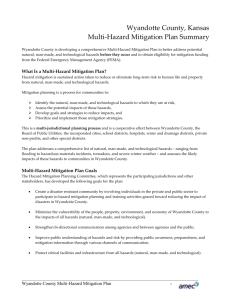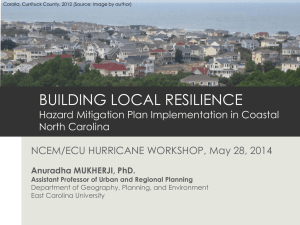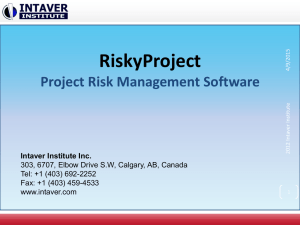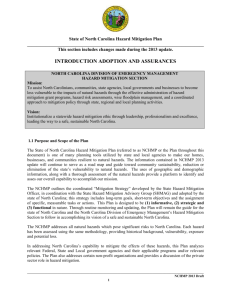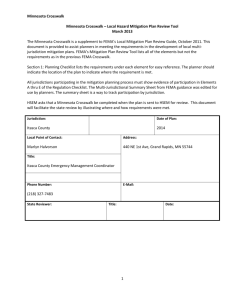Word - Alaska Division of Homeland Security and Emergency
advertisement
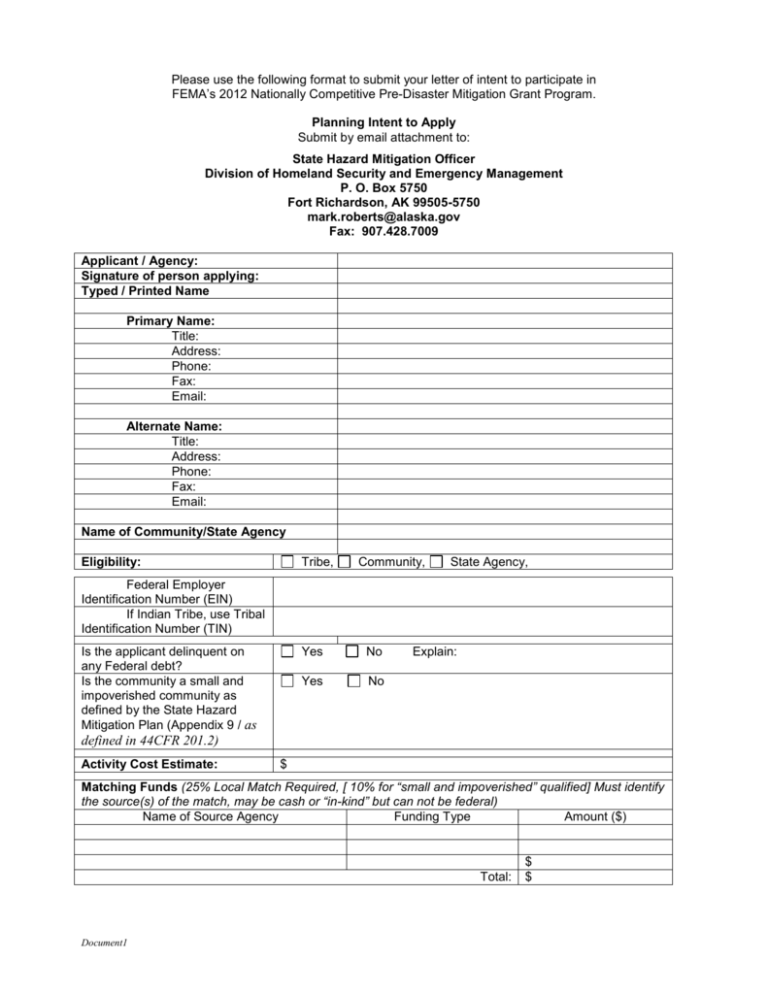
Please use the following format to submit your letter of intent to participate in FEMA’s 2012 Nationally Competitive Pre-Disaster Mitigation Grant Program. Planning Intent to Apply Submit by email attachment to: State Hazard Mitigation Officer Division of Homeland Security and Emergency Management P. O. Box 5750 Fort Richardson, AK 99505-5750 mark.roberts@alaska.gov Fax: 907.428.7009 Applicant / Agency: Signature of person applying: Typed / Printed Name Primary Name: Title: Address: Phone: Fax: Email: Alternate Name: Title: Address: Phone: Fax: Email: Name of Community/State Agency Eligibility: Tribe, Community, State Agency, Federal Employer Identification Number (EIN) If Indian Tribe, use Tribal Identification Number (TIN) Is the applicant delinquent on any Federal debt? Is the community a small and impoverished community as defined by the State Hazard Mitigation Plan (Appendix 9 / as Yes No Yes No Explain: defined in 44CFR 201.2) Activity Cost Estimate: $ Matching Funds (25% Local Match Required, [ 10% for “small and impoverished” qualified] Must identify the source(s) of the match, may be cash or “in-kind” but can not be federal) Name of Source Agency Funding Type Amount ($) Total: Document1 $ $ List names of each community covered by this planning activity: Community CID CRS Name Number Community CRS Rating Describe below how the proposed activity relates to or is consistent with the State's FEMAapproved mitigation plan (on-line at: http://www.ak-prepared.com/plans/mitigation/statehazmitplan07.htm) Example Narrative: This planning process will educate and involve our community with identifying the natural hazards, assessing the risk to the population, and analyzing the potential affects to the buildings and infrastructure. It will help us develop effective mitigation strategies and plan future development for our communities to reduce losses and damage from severe disasters. The plan will also enable us to qualify for future mitigation program funding for construction of effective mitigation projects to reduce loss of life and damages. This plan will comply with FEMA and State requirements. Planning of this nature is imperative to protect the interests of our constituents. The State’s FEMAapproved plan clearly outlines potential hazards and risks in our region which must be addressed. Add more detail as applicable. Refer to the Alaska State Hazard Mitigation Plan on-line at: http://www.akprepared.com/plans/mitigation/statehazmitplan07.htm and FEMA Mitigation grant guidance on-line at: http://www.fema.gov/plan/mitplanning/index.shtm Type of Grant: 1. Planning Grant: Is the grant requested for creating a new local hazard mitigation plan or updating an existing plan Type of Hazard Mitigation Plan creating a new plan updating an existing plan Local Multi-Jurisdictional Multi-hazard Mitigation Plan Local Multi-hazard Mitigation Plan Tribal (Local) Multi-Jurisdictional Multi-hazard Mitigation Plan Tribal (Local) Multi-hazard Mitigation Plan Describe the geographic area(s) to be covered by the plan. Attach geographical/topographical maps as necessary. Planning Project Description: Document1 Develop a Local All-Hazard Mitigation Plan to fulfill DMA 2000 §322 criteria. The FEMA/State approved and community adopted plan must be submitted as a condition for closing the grant and receiving final payment of grant expenditures. Example Scope of Work information: This grant would be used to develop a Local Hazard Mitigation Plan for approval by the Alaska Division of Homeland Security & Emergency Management (ADHS&EM) and the Federal Emergency Agency (FEMA). The plan will incorporate the following required tasks from the FEMA crosswalk approval form (see on-line at: http://www.fema.gov/library/viewRecord.do?id=3115): 1. Plan Approval. The plan will be reviewed and revised by the lead planning body of the community. The final plan will be approved by a resolution of the community’s governing body. The persons and agencies that will be responsible for writing the plan, ensuring public participation, and coordinating the approval process need to be specified. 2. Documentation of the Planning Process. The plan will provide a narrative description of the plan’s development process, including who was involved and how public input was solicited. 3. Identification of Hazards. The plan will identify hazards in the community, including but not limited to the identification and description of earthquake, fire, tsunami (if applicable), volcano, land slide, winter storms (severe weather), and erosion hazards. 4. Profiling of Hazard Events. The plan will profile the location, extent of previous occurrence, and probability of future hazard events. 5. Assessing Vulnerability: Identifying Assets. The plan will include a description of the community’s vulnerability and the impact of hazards on the community. This assessment will relate to infrastructure and critical facilities. 6. Local Hazard Mitigation Goals. The plan will include a section on mitigation goals. 7. Identification and Analysis of Mitigation Measures. The plan will identify specific actions and projects for each hazard; discuss projects and actions in regards to new buildings; and reduce affects on existing buildings and infrastructure. 8. Implementation of Mitigation Measures. The plan will include prioritized mitigation strategies; address how the actions will be implemented; administered and a cost-benefit review. 9. Monitoring, Evaluating and Updating the Plan. The plan update will include a section describing the method and schedule of monitoring, evaluating, and updating the plan within the required five-year cycle. 10. Implementation through Existing Programs. The plan will include a process by which the community will incorporate the plan into other community programs, plans, codes and regulations. 11. Continued Public Involvement. The plan shall include a discussion on how the community will continue public participation on the plan maintenance process. Document1







